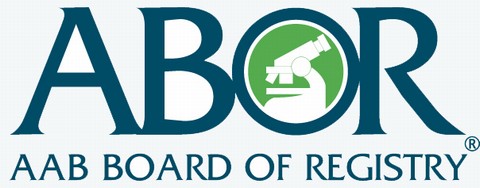Guidelines for Writing Examination Questions
Earn CE credit* for Writing ABB and ABOR Examination Questions
You may receive up to four (4) contact hours in each two-year continuing education recording period for writing examination items (questions) for the American Board of Bioanalysis (ABB) or the AAB Board of Registry (ABOR) examinations. One contact hour, credit is awarded for every six (6) examination questions. The questions must be in the correct format, original questions and be accepted by the Item Writers' Committee to receive CE credit.
* CE credit for writing and editing exam questions may not be applicable to California state licensure. Please contact the California Department of Health Laboratory Field Services for details on the types of credit they will accept.
Writing Examination Questions
Anyone who is ABB (BCLD, HCLD, PHLD, ELD, TS) or ABOR (MT, MLT, MDxT, ELS, ALS) certified may submit items (questions) for ABB and/or ABOR examinations. See below for general guidelines on writing items for ABB/ABOR examinations:
- Scenario Questions: The most challenging and desired new examination questions are those requiring examinees to 'apply' their knowledge or to 'make judgments' based on acquired knowledge through scenario type questions (we would like to avoid simple 'recall' type questions). These scenario or situational items are more difficult to write, and require extra effort to research the source of the examination question's reference.
- References: Each new item that you create must be accompanied with a reference [book title, edition or date published and page number(s)] containing the correct answer.
- Format: New items should be multiple choice (not essay or fill-in-the-blank) with four (4) possible answers. Remember to avoid "double negatives," "not" questions (e.g., "Which of the following is NOT true?"). Questions with "all of the above," "a and b," or "a, b, and c" as a possible answer are not allowed.
- Graphics: Graphics usually enhance an item, and you are encouraged to write new items with accompanying pictures, charts, or photomicrographs wherever possible (visuals should be forwarded in an electronic version, preferably 'jpeg' format, 300 dpi). Graphics, charts, and images should be original or those for which you hold the copyright. You will be asked to sign a copyright release of images that are submitted.
- Security/Confidentiality: To maintain security and confidentiality, please complete and sign this “Pledge of Personal Ethics and Confidentiality” form and forward it along with your examination items (questions) to abb@abbcert.org. Remember that the items you create may be on future forms of the examination and are not to be shared with others in your laboratory.
Please remember to specify the correct answer to all items submitted. The following format is provided as an example of the proper format:
Correct Item Format:
ID: Assigned by the ABB/ABOR OfficeCO: Insert the Content Outline position here (e.g. I.A)
RL: Insert the Reasoning Level here (e.g. 1) Level 1 - Recall: Ability to recall or recognize previously learned (memorized) knowledge ranging from specific to complete theories, Level 2 – Interpretive Skills: Ability to utilize recalled knowledge to interpret or apply verbal, numeric or visual data, Level 3 – Problem Solving: Ability to utilize recalled knowledge and the interpretation/application of distinct criteria to resolve a problem or situation and/or make an appropriate decision.
CORRECT: Insert the correct answer (e.g. D)
REFERENCE: D is correct. AUG is the most common start codon seen in eukaryotes. See Biochemistry, Webster and Milton, 2nd Edition, 2007; page 121, paragraph 3.
NOTES: Some scenario questions, due to the complexity, may require an explanation of why the correct answer is correct and the incorrect answers are incorrect along with more than one reference. A is Serine; B is Histidine; and C is Valine. Therefore, A, B, and C are incorrect. See Biochemistry, Webster and Milton, 2nd Edition, 2007; page 121, paragraph 3. A is wrong because it is a stop codon. B is wrong because it is a stop codon. C is a start codon but is only seen in lower organisms such as prokaryotes.
Which of the following is the eukaryotic translation start codon?
B. UAA
C. GUG
D. AUG
- About
- Membership
- Certification
- Continuing Education
- Activities
- News






